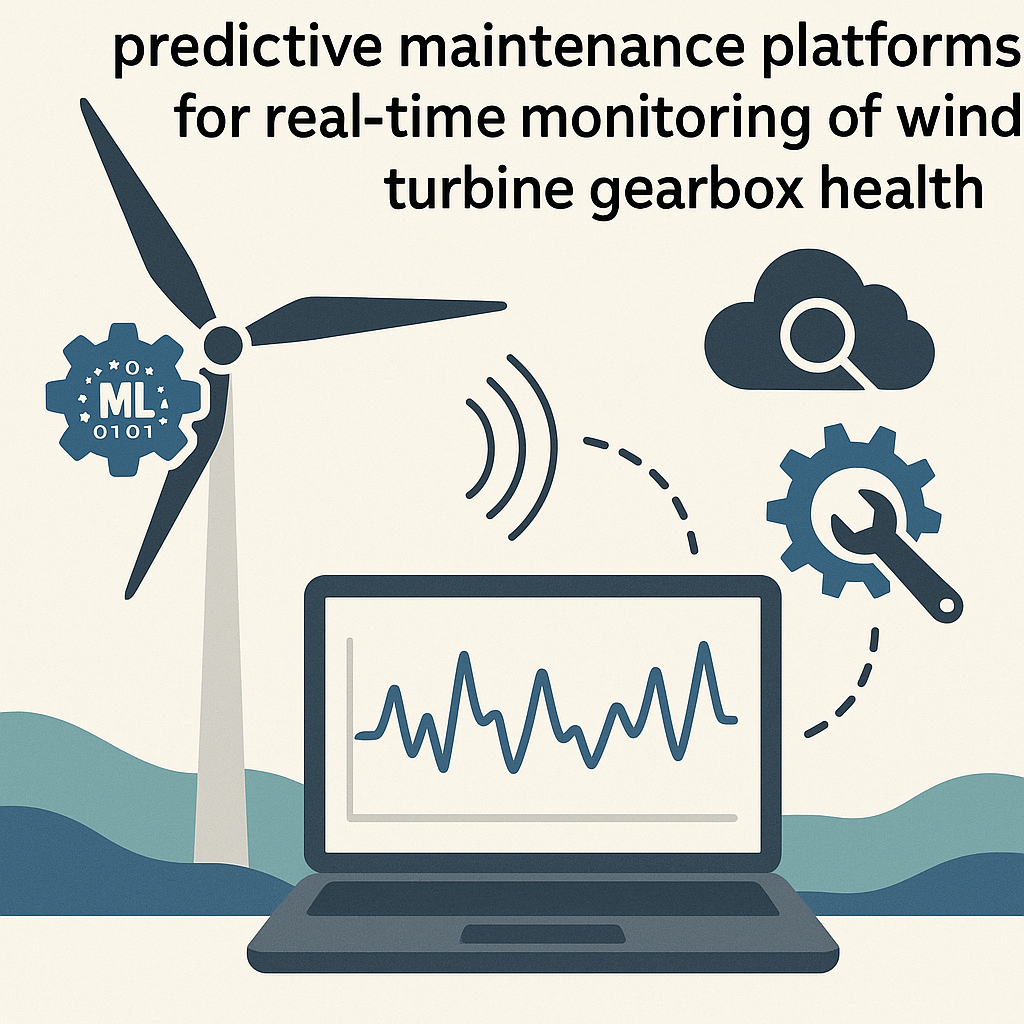Introduction
As the demand for renewable energy continues to rise, the efficiency and reliability of wind turbines have become paramount. One of the critical components in a wind turbine is the gearbox, which is essential for converting the rotational energy of the blades into usable energy. The deployment of embedded machine learning (ML) algorithms in predictive maintenance platforms offers a promising solution for real-time monitoring of gearbox health, leading to improved performance and reduced downtime.
Understanding Predictive Maintenance
Predictive maintenance refers to the use of data analysis tools and techniques to detect anomalies in equipment and predict failures before they occur. This approach is particularly beneficial in the context of wind turbines, where unexpected gearbox failures can lead to significant operational and maintenance costs.
Key Benefits of Predictive Maintenance
- Minimized Downtime: By predicting failures, maintenance can be scheduled at convenient times, reducing unexpected downtime.
- Cost Savings: Early detection of issues can prevent costly repairs and extend the life of equipment.
- Enhanced Safety: Regular monitoring helps ensure the safety of personnel by reducing the risk of catastrophic failures.
- Data-Driven Decisions: Using data analytics allows for informed decision-making based on the actual condition of the equipment.
The Role of Embedded Machine Learning Algorithms
Embedded ML algorithms play a crucial role in enabling predictive maintenance for wind turbine gearboxes. These algorithms can analyze data in real-time, allowing for immediate insights and actions based on the health of the gearbox.
How Embedded ML Works
- Data Acquisition: Sensors installed on the gearbox collect data such as vibration, temperature, and noise levels.
- Data Processing: The collected data is processed using embedded ML algorithms to identify patterns and anomalies.
- Real-Time Analysis: The algorithms provide real-time feedback on the gearbox’s health status.
- Actionable Insights: Maintenance teams receive alerts and recommendations based on the analysis, facilitating timely interventions.
Implementation Challenges
While the integration of embedded ML algorithms into predictive maintenance platforms offers numerous benefits, there are several challenges that must be addressed:
Data Quality and Quantity
High-quality data is essential for training effective ML models. In many cases, the data collected from sensors may be noisy or insufficient, impacting the accuracy of the predictions.
Computational Limitations
Embedded systems often have limited computational resources, which can restrict the complexity of ML algorithms that can be deployed. Striking a balance between model accuracy and computational efficiency is crucial.
Integration with Existing Systems
Integrating ML algorithms with existing maintenance systems and processes can pose logistical and technical challenges. Ensuring seamless communication between systems is vital for effective implementation.
Case Studies: Successful Implementations
Several companies have successfully deployed embedded ML algorithms for predictive maintenance in wind turbine gearboxes:
Case Study 1: Company A
Company A implemented a predictive maintenance platform that utilized embedded ML algorithms to monitor gearbox health. By analyzing vibration data, the system was able to predict failures with 90% accuracy, leading to a 30% reduction in maintenance costs.
Case Study 2: Company B
Company B used a combination of IoT sensors and embedded ML to track gearbox temperature and performance metrics. This proactive approach allowed them to reduce unexpected gearbox failures by 40%, significantly increasing turbine uptime.
Future Trends in Embedded ML for Predictive Maintenance
The future of embedded ML algorithms in predictive maintenance is promising. Here are some trends to watch:
- Advancements in Edge Computing: As edge computing technology improves, more complex ML models can be deployed closer to the data source, enhancing real-time processing capabilities.
- Increased Use of IoT Devices: The proliferation of IoT devices will facilitate more comprehensive data collection, leading to better model training and prediction accuracy.
- Enhanced Algorithms: Ongoing research will yield more sophisticated algorithms capable of handling diverse datasets and improving prediction reliability.
- Integration with AI: Combining ML with artificial intelligence can lead to more robust decision-making frameworks within predictive maintenance platforms.
Conclusion
The deployment of embedded ML algorithms for predictive maintenance in wind turbine gearboxes represents a significant advancement in the renewable energy sector. By enabling real-time monitoring and predictive insights, these technologies can enhance the reliability and efficiency of wind turbines, ultimately contributing to a more sustainable energy future. As challenges are addressed and technology continues to evolve, we can expect further innovations in this field that will shape the next generation of predictive maintenance solutions.



